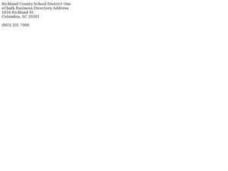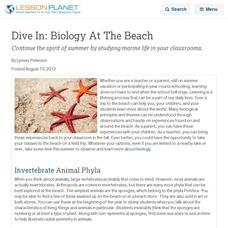Curated OER
Getting in Shape
Students create tangram rockets out of shapes and practice shape recognition.
Curated OER
A Wall of Symmetrical Shapes
Students explore line(s) of symmetry in polygons during a hands-on activity and a Student Web Lesson. They build a wall of symmetrical shapes designed and drawn by students.
Curated OER
Say It With Shapes
Learners create patterns with shapes and words. In this patterns and shapes lesson, students recieve an envelope with shapes with words on them. Learners make patterns with the shapes that also create a poem. Students can add to the poem...
Curated OER
Lines of Symmetry - Mirror Dance
Fifth graders analyze how to divide space or shape into mirror sections to create lines of symmetry. In this lines of symmetry lesson, 5th graders discuss symmetry in dance, math, and living. Students participate in a dance warm-up and...
Curated OER
Perching Parrot
Students explore the concepts of center of mass and static equilibrium by seeing how non-symmetrical objects balance. They also analyze why all forces on an object must cancel out exactly for an object to be stationary.
Curated OER
Symmetry of Road Signs
Students identify symmetry in road signs. In this geometry lesson, students explore objects in the real world for symmetry. They perform translation, rotation and reflection.
Curated OER
A World of Symmetry
Students identify lines of symmetry. In this symmetry lesson, students create objects and identify their lines of symmetry. They answer questions about lines of symmetry. Students cut shapes out of cookie dough and decorate it to...
Curated OER
Are We the Same?
Students define and discuss symmetry, line of symmetry, and congruency. They cut shapes out of construction paper, identify the line of symmetry, and if they are symmetrical and/or congruent.
Mathematics Vision Project
Module 5: Modeling with Geometry
Solids come in many shapes and sizes. Using geometry, scholars create two-dimensional cross-sections of various three-dimensional objects. They develop the lesson further by finding the volume of solids. The module then shifts to finding...
Curated OER
Symmetry and Symbols
Students identify symmetrical and congruent elements in folk art. In this art and geometry lesson, students examine pictures of Masonic Plaque in the Form of a Royal Arch Tracing Board for evidence of congruent and symmetrical elements....
Curated OER
Symmetry with Manipulatives
First graders investigate symmetry in patterns by utilizing unifix cubes. In this pattern lesson, 1st graders practice creating patterns that are perfectly symmetrical no matter which way it's looked at. Students utilize original...
Curated OER
Normal Probability Plot
Students analyze the graph of a distribution. In this statistics lesson, students define skewed or mound shape distribution as they investigate the data behind the graph. They define and plot outlier as well as normal probability.
Curated OER
Pattern Matching
First graders examine how to determine the lines of symmetry in pictures, shapes, and patterns by completing the lessons in this unit. They make patterns that show a line of symmetry and describe it using their own language.
Curated OER
Wind Effects on Model Building: Lab for Deflection and Moment of Inertia
Students investigate the relationship between shape of object and moment of inertia. In this physics lesson, students collect data from the experiment and use spreadsheet to graph them. They discuss how load affects deflection.
Curated OER
Mine Is! Is Yours?
First graders engage in a lesson plan which teaches the concept of symmetry through the use of letters in the student's name. They use a piece of yarn to see if they can make symmetrical pieces out of their own names.
Curated OER
Unit 3 Bonding
An organized table charting the different types of chemical bonds arrays this resource. The octet rule, ionization energy, and the naming of compounds are also reviewed. Young chemists answer review questions in multiple choice fashion....
Curated OER
Dive In: Biology At The Beach
Continue the spirit of summer by studying marine life in your classrooms.
Curated OER
Technology Integrated Lesson
Learners investigate symmetry in the real world. In this geometry instructional activity, students inter-relate math and technology. They create and name a variety of polygons.
Curated OER
Volcano Contour Models Activity
Young scholars experiment with water levels and plastic topographic volcano models to determine the contour lines that would be used to create a topograpohic map of a volcano. They use the traced lines to actually develop the map.
Curated OER
Principle of Art Balance
Reinforce a strong art vocabulary which can also apply to aspects of math and science. Kids read about various types of balance or symmetry found in art. They analyze three paintings based on vocabulary and read a how-to for creating...
Howard Hughes Medical Institute
Virus Explorer
Most pupils know about the flu, HIV, and other viruses, but they don't know what each actually looks like. This interactive shows their relative size, structure, and allows for comparisons. It stresses the similarities and differences...
Curated OER
Learning About Guatemala Through Its Kites
Pupils are introduced to Guatemala and to the tradition of giant kites. They decorate the kite sail and construct the kite. Students identifies possible causal factors contributing to given historical events.























